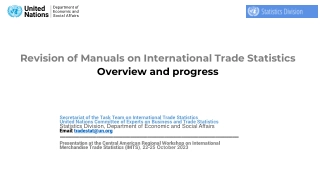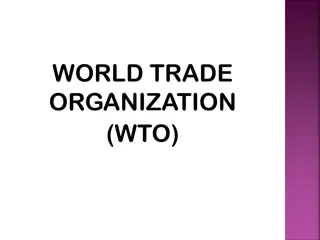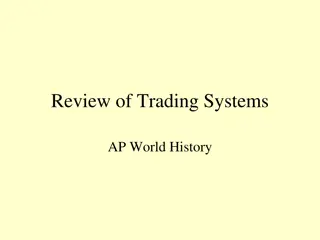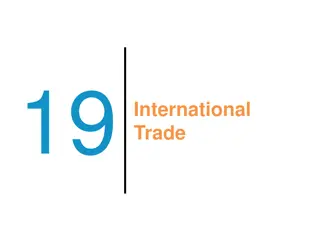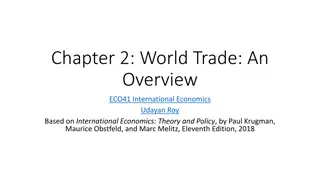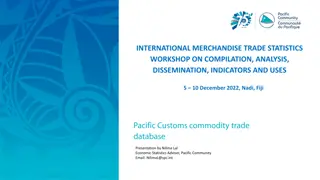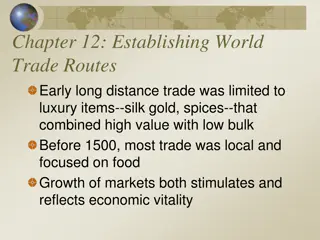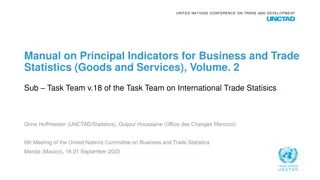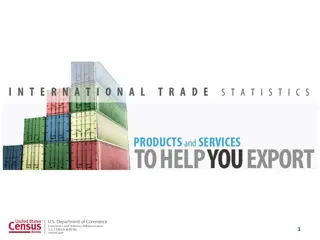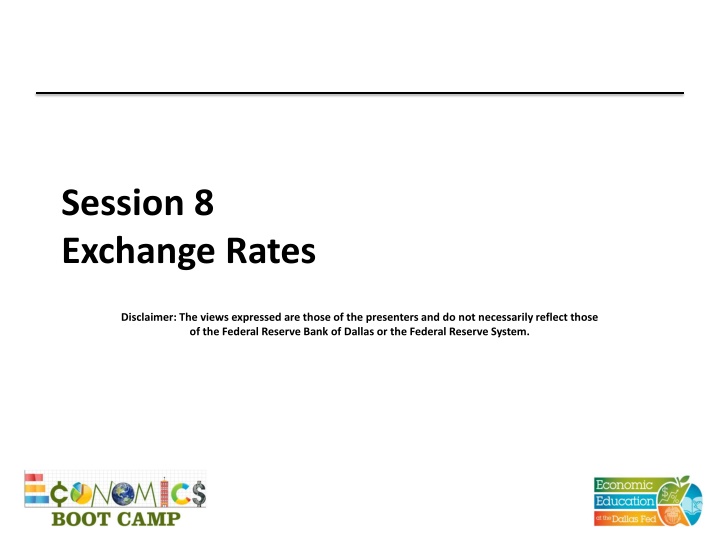
International Trade Overview
This content provides insights into international trade, exchange rates, foreign exchange markets, and factors affecting supply and demand in the short run. Explore topics such as nominal exchange rates, weakening/strengthening currencies, and the impact on imports/exports.
Download Presentation

Please find below an Image/Link to download the presentation.
The content on the website is provided AS IS for your information and personal use only. It may not be sold, licensed, or shared on other websites without obtaining consent from the author. If you encounter any issues during the download, it is possible that the publisher has removed the file from their server.
You are allowed to download the files provided on this website for personal or commercial use, subject to the condition that they are used lawfully. All files are the property of their respective owners.
The content on the website is provided AS IS for your information and personal use only. It may not be sold, licensed, or shared on other websites without obtaining consent from the author.
E N D
Presentation Transcript
Session 8 Exchange Rates Disclaimer: The views expressed are those of the presenters and do not necessarily reflect those of the Federal Reserve Bank of Dallas or the Federal Reserve System.
TEKS (3) Economics. The student understands the reasons for international trade and its importance to the United States and the global economy. The student is expected to: (C) analyze the impact of U.S. imports and exports on the United States and its trading partners. (4) Economics. The student understands the issues of free trade and the effects of trade barriers. The student is expected to: (C) analyze the effects of changes in exchange rates on imports and exports.
Teaching the Terms Exchange rates Appreciate Depreciate Purchasing power parity Nominal values Real values
Foreign Exchange Market Derived demand Currencies are bought and sold Largest financial market in the world Operates 24 hours a day
Nominal Exchange Rates Rate at which the currency of one country can be exchanged for the currency of another country Depreciate = Weaken = Lose value Appreciate = Strengthen = Gain value
Exchange Rates One exchange rate is the reciprocal of another exchange rate If 1 = $2.00, then $1 = 0.50 As the exchange rate fluctuates, the value (or strength) of each currency is affected When one currency strengthens, the other weakens
Weakening Dollar / Strengthening Euro Value of $1 = 1.00 (or 1 = $1.00) U.S. dollar $1 = 0.67 (or 1 = $1.50) $1 = 0.50 (or 1 = $2.00) Falling
Weakening Euro / Strengthening Dollar Value of 1 = $2.00 ($1 = 0.50) 1 = $1.50 ($1 = 0.67) Euro Falling 1 = $1.00 ($1 = 1.00)
Exchange Rates in the Short Run Model with supply and demand graph Quantity of dollars Price of a dollar in a foreign currency Factors affecting supply of dollars American purchase of goods and services produced abroad American investment in foreign assets Factors affecting demand for dollars Foreign purchase of American goods and services Foreign investment in American assets
S1 Number of Euros per Dollar S2 1 2 D1 1 2 Quantity of Dollars Traded Increasing supply of dollars Leads to a falling price (value)
S1 Number of Euros per Dollar 2 1 D2 D1 1 2 Quantity of Dollars Traded Increasing demand for dollars Leads to a rising price (value)
A stronger U.S. dollar means U.S. can buy foreign goods more cheaply and U.S. imports will increase Foreigners find U.S. goods more expensive and U.S. exports fall
A weaker U.S. dollar means Foreigners can buy American goods more cheaply and U.S. exports will increase Foreigner goods become more expensive for U.S. residents and U.S. imports fall
Exchange Rates in the Long Run Law of one price Identical items should sell for the same price Purchasing power parity (PPP) One unit of domestic currency will buy the same basket of goods anywhere in the world PPP implies that the real exchange rate will always be 1
Exchange Rates in the Long Run Real exchange rate Rate at which the goods and services of one country can be exchanged for the goods and services of another country Dollar price of domestic goods Real exchange rate = Dollar price of foreign goods

